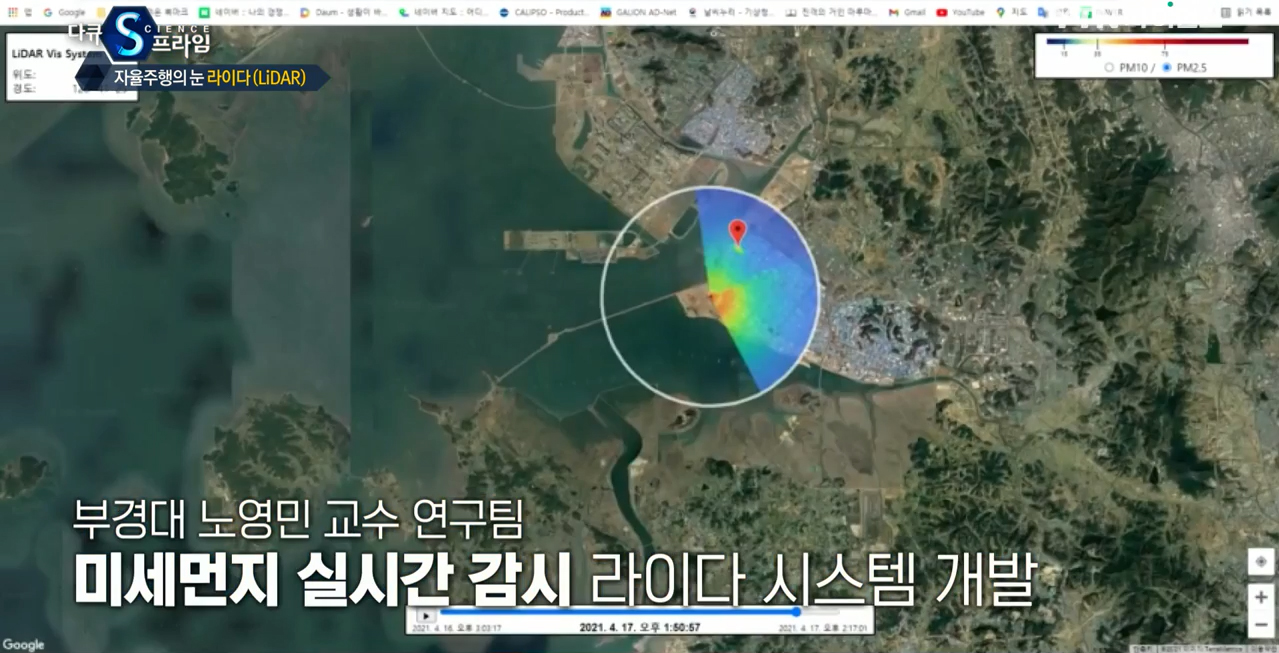Touching Tomorrow atPukyong National University
NEW BEGINNING, NEW INSPIRATION
Pukyong Today List
| Introduced on the YTN Science Channel | |||
| WRITER | 대외협력과 | WRITE DAY | 2021-10-13 |
| COUNT | 210 | ||
| Introduced on the YTN Science Channel | |||||
 |
대외협력과 |  |
2021-10-13 |  |
210 |
YTN Science showed interest in the Fine Dust Observation System Technology that PKNU has
'Docu S Prime' introduced the latest update of Prof. Noh Young-Min's research team

△ Screen capture of a program, 'Docu S Prime'.
The activities of the research team of Professor Noh Young-Min (Department of Environmental Engineering) of Pukyong National University have been introduced on the channel ‘YTN Science’.

YTN Science introduced the 'Scanning LiDAR (Light Detection And Ranging) System' developed by Professor Noh Young-Min and his research team as an example of lidar application technology in the episode ‘Eye of Autonomous Driving, LiDAR’ of the program ‘Docu S Prime’ on September 23rd.
This broadcast introduced lidar technology, which can be said to be the core technology of the 4th industrial revolution. In the past, this technology was only used for meteorological observations, accurately drawing terrain, or guiding airplane landings, but now it is deeply involved in our daily lives.
Lidar is a compound word of light and radar, and it is a technology to check the reflection of an object by emitting a signal. Although the principle is similar to that of radar, the emitted signal is composed of short-wavelength laser pulses, enabling precise images of objects.
Lidar technology has recently led to practical applications and applications such as autonomous driving technology, AR virtual reality technology, and 3D spatial model through spatial scanning, as well as farm large-scale livestock management, climate change conservation, forest management, and sewage maintenance.
In this episode, a high-resolution scanning lidar system for monitoring the distribution of fine dust concentrations developed by Professor Noh Young-Min's research team was introduced as an example of the use of lidar technology.
This is a smart system that can calculate the mass concentration of fine dust by dividing it into fine dust and ultrafine dust with a high resolution of 30 m in an observation area within a 5 km radius by introducing a scanning method to lidar technology.
In the episode, it is expected to be able to calculate basic data that can remotely grasp the current state of fine dust and current emission.
You can check the video on the YTN Science website and YouTube (YTN Science). <Pukyong Today>